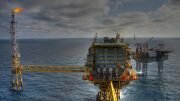Is farmed salmon safe and healthy?
The next time you’re near the meat counter or looking at a seafood restaurant menu, consider ordering fish, especially salmon.
Unless a restaurant menu expressly labels its salmon as “wild caught,” it undoubtedly was raised and harvested from a fish farm. You may not know that for the last 20 years, salmon fish farming exceeds commercial fishing. If you’re in Europe considering this choice, there’s a good chance the salmon was farmed in Norway, or possibly Scotland. In North America, farmed salmon in restaurants and grocery stores comes from Maine, Washington, Canada (especially British Columbia), or Chile.
Farmed salmon are almost exclusively Atlantic salmon. Norwegians pioneered the contemporary technique of salmonid aquaculture using floating sea cages. Fish is Norway’s most important export aside from oil, and at least 70 percent of this exported fish is farmed. According to the UN Food and Agricultural Organization (FAO), Norway and Chile produce two-thirds of the world’s supply of farm-raised salmon as of 2008.
In salmon farming, the tiny alevin is hatched from eggs in freshwater tanks on land, and after maturing from fry into smolt, they are transferred to floating sea cages or pens. The cages, which are often circular, are constructed of metal or plastic frames with mesh along the sides and bottom. Since the salmon cannot eat their normal diet of krill, shrimp, and smaller fish, they are fed food pellets with oils, fish meal, and color enhancers. Sometimes additional medications are added to the feed to control parasites or viral or bacterial infections.
Wild-caught Pacific salmon such as chinook, coho, or sockeye may still be more popular than farmed Atlantic salmon, but it may cost you at least twice as much and only be available certain times during the year in grocery stores or restaurants. In contrast, farmed Atlantic salmon is cheaper, available year-round, and for many has all the great taste one expects from wild salmon. But is farmed salmon as nutritious as wild salmon? Is there health or other concerns one should be aware of? These are not idle questions, and the answers are surrounded by controversy.
Image courtesy of Eric Stavney
Salmon decrease the risk of heart disease
What is not controversial are the health benefits of eating salmon. The World Health Organization advises eating oily fish like salmon at least twice a week because it’s a rich source of protein and also one of the best sources of omega-3 fatty acids. These fatty acids, especially those known as eicosapentaenoic acid (EPA) and docosahexaenoic acid (DHA) are essential to the human diet. A third fatty acid, alpha-linolenic acid (ALA) is also essential.
In nutrition-speak, “essential” means that our bodies cannot make these fats on their own, yet they are crucial for normal metabolism and good health. That means they must be acquired in our diet. The best source of EPA and DHA is oily fish, especially salmon. In the human body, omega-3 fatty acids are involved in several key metabolic functions, which on a larger level promotes healthy heart function, preventing disease and strokes.
For strict vegetarians, getting the essential omega-3 EHA and DHA fatty acids is a challenge, given they don’t eat fish or fish oil. Supplements containing DHA produced from algae are available, however, and ingesting flaxseed oil or walnuts provides for the essential ALA fatty acids.
While wild salmon get their omega-3s from eating smaller fish like herring, omega-3s must be added to the food pellets fed to salmon in farms. Since the best source of these fatty acids is still oily fish, fish meal and fish oil (often from anchovies) have traditionally been added to the pellets to provide omega-3s as well as protein. But since fish meal comes from harvested ocean fish, many of which are suffering population declines, the fish farm industry has moved to use food pellets that are about 70 percent of plant origin, which is mostly soybeans. Even though farmed Atlantic salmon aren’t fed a full animal diet, they contain the same nutrients, protein, and fatty acids that Pacific salmon have, according to nutritional analyses.
So farmed Atlantic salmon is every bit as good as Pacific salmon, right? Here’s where things get a little more complicated.
Questions of food safety and quality
When you compare farmed to wild salmon, one immediately runs into differences of opinion about food safety and food quality. Consumer questions about farmed salmon include concerns about elevated levels of Polychlorinated biphenyls (PCBs), the presence of antibiotics or other chemicals, and the possibility of disease organisms.
With regards to PCBs, farmed fish potentially could contain levels toxic to humans, because they have historically been fed pellets with substantial fish meal. PCBs are oil-soluble cancer-causing toxins that were used in manufacturing in the United States and other countries until their ban in 1979. They have found their way into river and ocean sediments, which are then ingested in low concentrations in forage fish. However, as larger fish eat them, and so on up the food chain, they become more and more concentrated, especially in oily fish. Feeding farmed salmon fish meal from anchovies, herring, or mackerel theoretically increases PCB concentrations even further in salmon we use for our food.
In the 1980s and 1990s, several studies seemed to show that accumulation of PCBs or other food chain toxins were real risks, but further studies have revealed that risk to actually be very low. In fact, farmed salmon, on average, have lower levels of PCBs than wild-caught salmon. In the European Union, fishmeal and fish oil have been routinely tested for contaminants since 2005, and the concentration of toxic chemicals and heavy metals is monitored.
A fish farm along the coast of Norway. Photo: CreativeCommons
With regard to disease, Dr. Jill Rolland, director of the USGS Western Fisheries
Research Center in Seattle, says that modern veterinary science has greatly advanced the control of fish diseases. Although antibiotics are in widespread use in farming poultry, pigs, and cattle, they are not routinely used prophylactically in salmon farming. When they are used, on an extremely limited and temporary basis, the antibiotics are allowed to pass through the salmon before any harvesting occurs. Effective vaccines also have been developed to control fish viral and bacterial diseases, which has greatly reduced the need for antibiotics. The concern of ingesting low levels of antibiotics in fish (or other meat) is that they accelerate the evolution of antibiotic-resistant bacteria in our bodies. If these microbes then make us ill, antibiotics are ineffective against them.
Medications are sometimes added to feed to control parasites like sea lice. Because fish are farmed in such close proximity, “sea lice” infestation throughout the farm can be a serious problem. The “sea lice” that infect salmon are copepod crustaceans that attach to the skin and as adults graze on the mucus, blood, and skin. Such infestations make the salmon unmarketable. There is some debate as to whether sea lice can migrate from salmon farms to passing wild salmon, posing an additional threat to already threatened salmon populations. In Norway, wild salmon are known to pick up sea lice when they swim from the sea to the fjord in spring to spawn in the rivers, but the lice usually fall off during the river migration. In some localities, the drug enamectin has been added to feed in order to combat louse infection, but sea lice appear to be growing resistant to this medication. Farmers, especially in Norway, are increasingly turning to forms of biological control, such as using “cleaner” fish (wrasses and lumpsuckers) to pick lice from infested salmon.
In our next issue, we run the second part of this article, where we look at the world food supply and the other impacts of growing farmed salmon.
Eric Stavney is a graduate of the UW Scandinavian Studies and Biology Departments and co-hosts the Scandinavian Hour on KKNW 1150AM, Saturdays at 9 a.m. Pacific at 1150kknw.com/listen.
This article originally appeared in the February 22nd, 2019, issue of The Norwegian American
This article was first published by The Norwegian American
© The Norwegian American / #Norway Today










